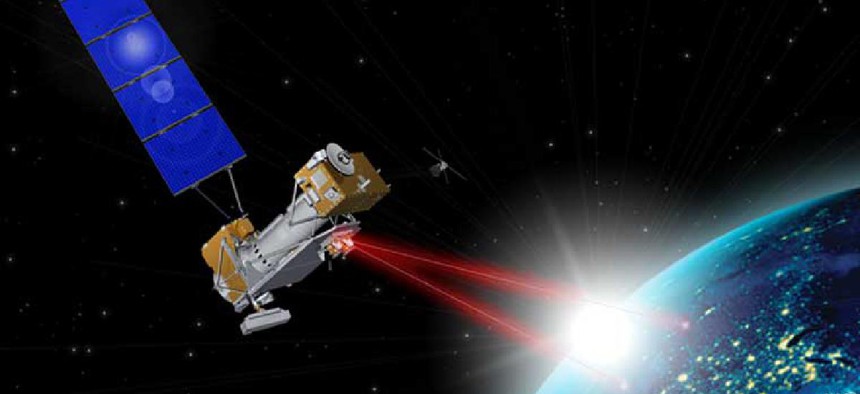Air Force invests in high-speed satellite data

As the amount of satellite data rapidly increases, government agencies are looking for new ways to transmit more of it faster.
As the amount of satellite data rapidly increases, government agencies are looking for new ways to transmit more of it faster.
One option is optical networks, which would speed the delivery of satellite data and allow much more data to be transmitted via a smaller, lighter system.
The Air Force's commercial investment arm, AF Ventures, awarded a contract to Analytical Space Inc. on Feb. 10. The award is for the company’s Fast Pixel Network, a low-Earth orbit data transport network that will ingest geointelligence data from satellites, route that data via high-speed optical intersatellite links and deliver it in real time to intelligence analysts, military commanders or commercial consumers of satellite data.
Operating between orbiting geoint satellites and ground stations networks, the Fast Pixel Network’s constellation of satellites will serve as a network backbone for communications that are orders of magnitude faster than existing space networking architectures, Analytical Space officials said. Its very low latency network will help eliminate the data bottlenecks experienced by current satellites that must hold their data until they pass over a ground station, according to a company video. When complete, the Fast Pixel Network will consist of “multiple interlinked orbital planes that use inter-satellite connections to receive, cross link and downlink data to the most ideal ground location.”
In mid-2021, NASA’s Laser Communications Relay Demonstration experiment will be launched, making it the space agency’s first optical relay for sending and receiving data from missions in space to mission control on Earth.
Laser-based communications have the potential to provide significant benefits to missions, including bandwidth increases of 10 to 100 times more than radio frequency systems. However, unlike radio waves, optical signals cannot penetrate cloud coverage, so any optical communication network must be flexible enough to avoid interruptions due to weather, NASA explained on its website. Additionally, only two ground stations – in Hawaii and California – are currently able to accept the optical data.






